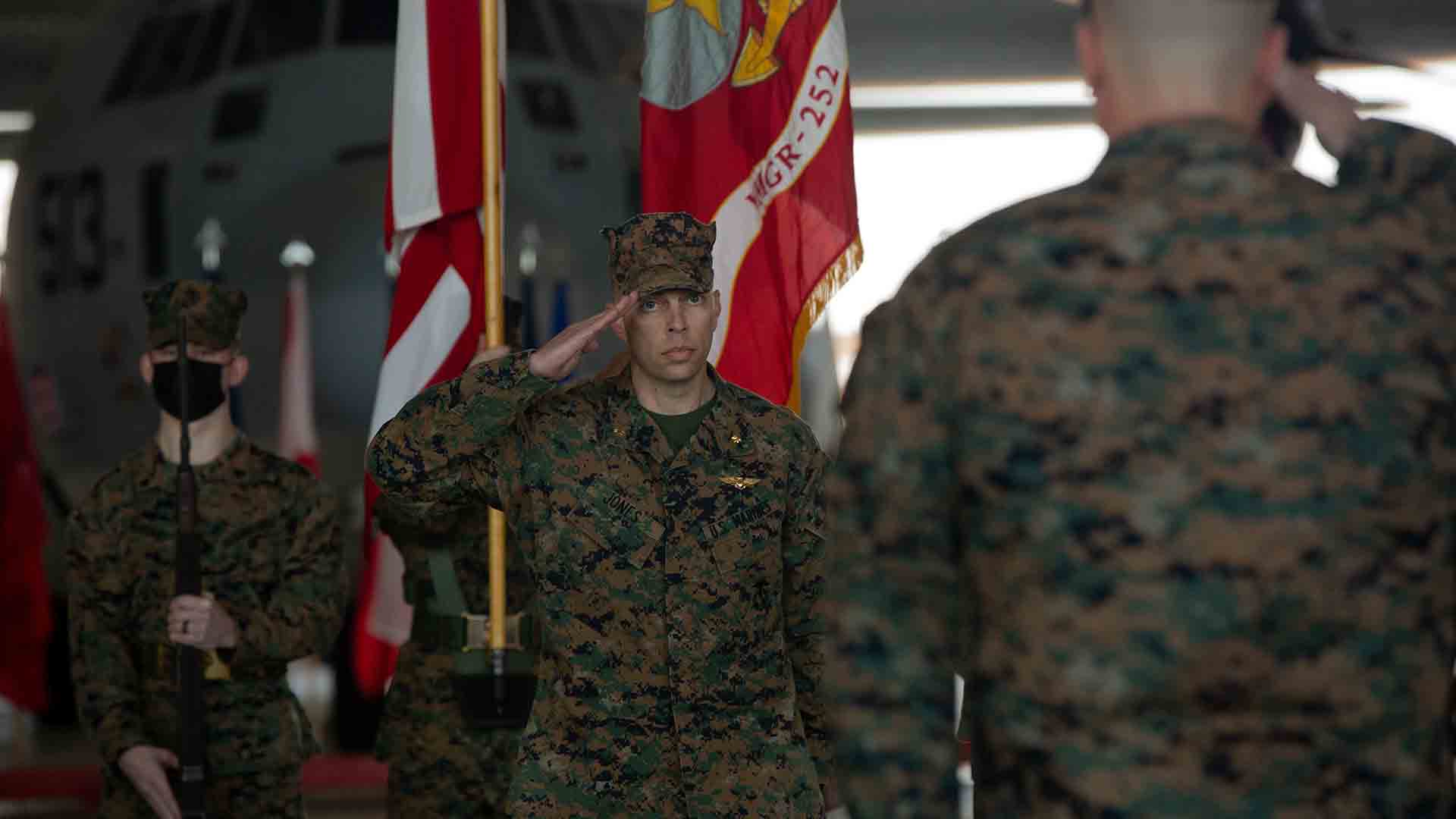

For 12 minutes, Marine Maj. Cory T. Jones fought to keep his stricken KC-130J tanker in the air following a collision with a F-35B that could have very well ended in disaster.
On Sept. 29, 2020, Jones was piloting a Super Hercules during an air-to-air refueling mission when the F-35B struck his aircraft. Terrifying video that emerged on social media showed the Joint Strike Fighter hurtling to the ground and then exploding into a fireball. The pilot was able to safely eject.
But the KC-130J did not have any ejection seats. In fact, it only had five parachutes and there were eight crew members aboard at the time, Jones later recalled for a video posted by the 2nd Marine Aircraft Wing.
Even though the plane had lost two engines and was on fire, Jones and the rest of the crew worked methodically to address numerous simultaneous crises. As a result of their teamwork, the KC-130J safely landed in a farmer’s field. Nearly two years later, Jones was awarded the Distinguished Flying Cross, the fourth highest military award for bravery, for helping to save all eight crew members that day.

On the day of the incident, the KC-130J crew was refueling aircraft that were taking part in training at The Weapons and Tactics Instructor Course in Yuma, Arizona. While refueling one of the F-35Bs, Jones heard one of the KC-130J crew members warn that the Joint Strike Fighter was going to hit the tanker.
“From the time he made his initial call to the aircraft hitting us was about 1.2 seconds,” Jones said in the 2nd Marine Aircraft Wing video. “There wasn’t any time to comprehend what was going on or react, but I do remember just the immediate thought was: I can’t believe this is happening to me.”
Jones had recently become a father. He had also lost friends in the two prior KC-130 crashes and sometimes wondered what they had felt in their last moments.
“I was like: Well, I know how they feel; and I did not expect to be able to fly the aircraft away from this situation because there haven’t been any successful midair collisions with a C-130, that I know of, in which the crew survived,” Jones said.

The force of the impact had knocked the controls out of Jones’ hands. He was assaulted by a fusillade of loud noises from within the aircraft. But when he was able to grab the controls again, he instantly realized the KC-130J was still able to fly.
“That was kind of like the shock moment – like; OK, maybe we’ve got a chance here; we can do something,” Jones said.
Both the plane’s right-side engines had been damaged and were missing propeller blades. The fuselage and landing gear were also damaged and one of the plane’s external fuel tanks was on fire. The War Zone reported in September 2020 that an audio recording of the tanker’s communications with air traffic control had been posted online. The KC-130’s call sign was RAIDER 50.
“L.A. center, L.A. center, RAIDER 50 declaring an emergency: Midair collision with VOLT 93,” one of the KC-130J’s crew calmly reported over the radio. “We have two engines out; we’re leaking fuel and likely on fire and in emergency descent at this time.”
After an air traffic controller asked if the KC-130J was going down, the crew member replied: “We still have partial control of the aircraft. Two engines out. We’re aiming towards, uh ….”
The message abruptly halted. It took roughly 30 seconds for the air traffic controller to reestablish communications with the KC-130J, which was going to attempt to land at an airport in Thermal, California, a small desert town roughly 25 miles from Palm Springs.
But they didn’t get that far.
“We never intended on going into a farmer’s field,” Jones said in the 2nd Marine Aircraft Wing video. “But due to multiple system failures, once we got low enough where we could attempt to make a landing at the airport at Thermal, we realized it was no longer tenable. There was no way for us to continue our approach to that airport. The aircraft made an uncontrolled right turn due to getting into below our minimum control airspeed, and at that time we found the field straight off the nose of the aircraft and just decided to put down in the field.”
Jones credited the entire crew for working together as a team and tackling each problem step by step for the 12-minute descent until they were all able to walk away.
“We all had a job to do,” he said. “Nobody quit. Nobody froze up, clammed up. Everybody remained focused on what they had to do because we all knew that it was going to take a team effort to safely get that aircraft on the deck.”
What’s new on Task & Purpose
- The ‘Ghost of Kyiv’ is the first urban legend of Russia’s invasion of Ukraine
- Man calls into public radio with tips on how to make Molotov cocktails in Ukraine
- ‘Russian warship, go f–k yourself’ — Ukrainian troops make heroic last stand on Black Sea island
- The Navy is moving ahead with court-martial of a sailor accused of torching a $3 billion warship
- Military nuclear experts explain the actual danger of troops battling in the shadow of Chernobyl
- Here’s what those mysterious white ‘Z’ markings on Russian military equipment may mean
Want to write for Task & Purpose? Click here. Or check out the latest stories on our homepage.
